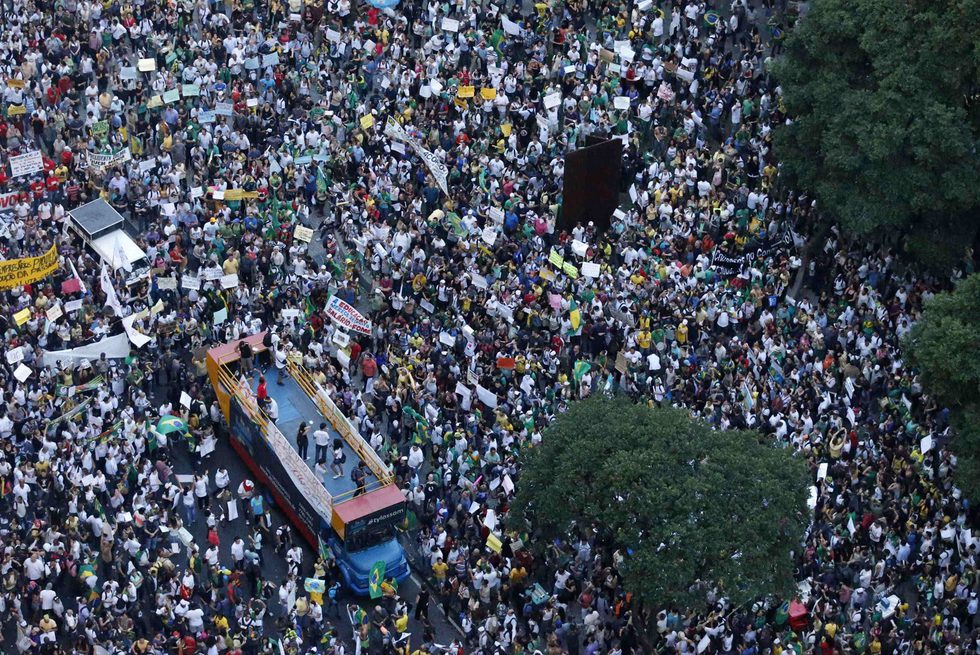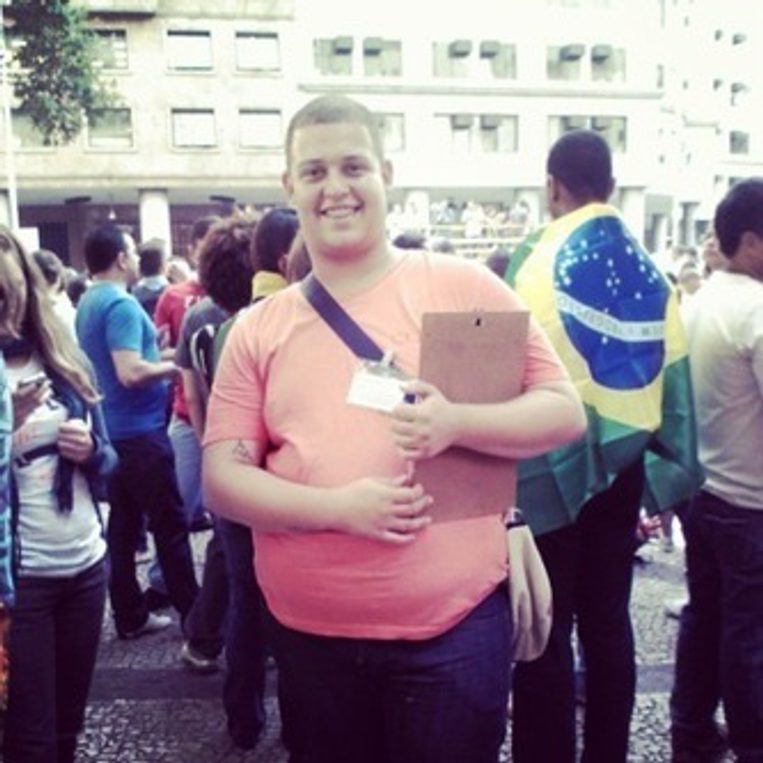How a Protestor, Interviewer, Anthropologist, and Businesswoman Perceived the Demonstrations in Rio de Janeiro
From the Series: Protesting Democracy in Brazil
From the Series: Protesting Democracy in Brazil

At the end of 2012, I withdrew from my doctorate studies to open a research company called Clave de Fá (Bass Clef). I recount my experience at the protests as a personal experience connected to my own development as researcher and professional.
At first I viewed the marches as just another movement that would gather little more than a thousand people, even when a number of friends without political or partisan leanings wrote to ask if I was going to the “Monday march,” scheduled in several Brazilian state capitals in support of the protestors assaulted in São Paulo and against bus fare increases. Even so, it was all people were talking about on social networking sites. The sheer buzz on these sites was enough to make the disbelievers believe.
So it is believed that more than 100,000 people were in the march. And, despite the main agenda, on Monday there were already several comments about expanding the demands and causes given the huge response by the population.
Although I knew several of my friends would be going, I decided to go alone. My intention was always to “observe” as opposed to merely “protesting.” I arrived at 6 p.m. when the march had just begun, and spent some time watching others arrive. In reports on the marches and demonstrations the previous week in São Paulo, the protestors had been described as “young, middle class, with no political culture.” However, many of the young people I saw were not so young, men—in lesser numbers, women—over thirty years old.
Twenty minutes later I started walking alongside the march. The aim was not to slowly follow the procession, but to reach to the head and see who had organized it, given the confusion on social networks. It was impossible not to fall under its spell: paper confetti rained down from the windows of buildings; staff that were unable to leave work flashed the lights in their offices, responding to the protestor’s calls, “Those in favor, flash your lights.”
A friend and I talked a little before people began advising that the “movement” was heading to the Rio de Janeiro State Legislative Assembly (Alerj) to occupy it.
I left the march at about 8:30 p.m., imagining that the occupation of the Alerj would be a mild affair. But that’s not what happened. Nevertheless, in contrast to what usually happens when demonstrations become more violent, the population sympathized with this one to a certain degree. I was surprised by the number of non-political and non-militant people who supported the protestors, who had opted for a more direct confrontation.
The wide range of demands, the lack of direction by social movements or parties of all that was taking place, the idea of more marches and protests, and the emergence of more conservative demands were the main subjects of conversation on social networking sites over the following days. But what most interested me was the media’s stance that all the movements were comprised of young students under the age of twenty-five.
So I suggested to the partners at two companies I work with, Plus Marketing and Aham Comunicação Interativa, that we conduct or own research on the profile of the protestors, arguing that it could be a good way to publicize our companies on social networks and in the media. We decided to apply 400 two-minute questionnaires during the march scheduled for the following Thursday on June 20, 2013.

As a partner of the company, my main concern was for the safety and physical integrity of the interviewers. Since conducting the interviews only at the head of the procession might have compromised the sample and the results, pairs of interviewers positioned themselves at intervals from the beginning to the end with the instruction that, if anyone felt threatened, they should take cover and interrupt the work.
About an hour and a half after it began, many were still arriving. I realized that contrary to the original plan, the march was to end in front of Central do Brazil train station, because police were already clashing with the first protestors to arrive at the City Hall.
A firework going off caused people to scatter. I looked around and saw a place to shelter the team at the Child and Adolescent Police Department should anything go wrong. I sent a number text messages to the team members asking them not to head towards City Hall as planned.
Another firework went off and the crowd started running. Smoke swept over the road. I realized that the police were advancing to disperse the crowd. I gradually found all the interviewers and asked them to take shelter at the center. Suddenly, the street was overrun by people breaking trashcans and poles and fighting amongst themselves. Police officers at times violently dispersed them and at others tried to reason with them, indiscriminately. There were protestors and street children, some looking like muggers, some with their faces covered, and others wearing only a pair of shorts. The great majority were young males, some with military-style haircuts.
At the Department some people complained because street children were also allowed to enter the building, which, after all, was supposedly there to protect them. Those were neither the first nor the last conservative statements I heard during the marches, but they were certainly the most aggressive. I saw youngsters being physically assaulted on the street, and it was impossible to identify which social group the aggressors might belong to.
As I walked home, I saw the wake of destruction left by the violent faction of the June 20 march: broken trashcans, garbage scattered everywhere, some of it on fire, frightened people running in the other direction. I have always disagreed with violence during demonstrations or political protests. But I finally understood that this face had become part of the political protests continuing to this day, as I write this article.